FREE Uber Tax Info Pack
FREE 5-Day Email Course to learn the ATO’s Uber tax rules
FREE Uber Expense Spreadsheet so you never miss a deduction
FREE Uber Logbook Spreadsheet to claim your car expenses
FREE ABN & GST Registration (if you need it!)
FREE Uber Tax Info Pack
> FREE 5-Day ‘Uber Tax Essentials’ eCourse
> FREE Uber Bookkeeping Spreadsheet
> FREE Uber Logbook Spreadsheet
> FREE ABN & GST Registration
Uber BAS Explained – The Ultimate Guide to BAS’s for Uber Drivers
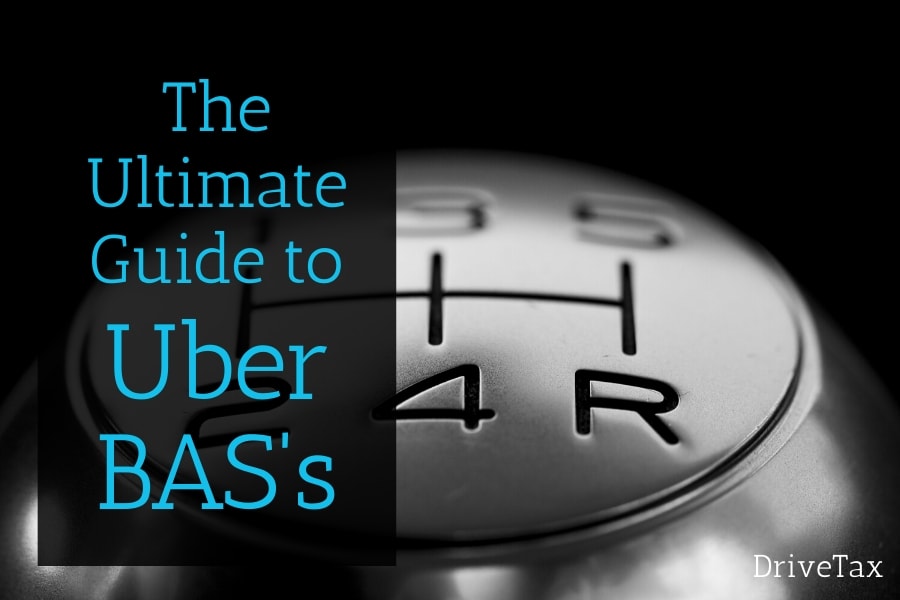
Updated 28th of June 2024
If you’re an Uber or rideshare driver, you’ve no doubt read that you must lodge a BAS to the ATO each quarter.
But if you’re like most Uber drivers, it’s your first time running your own business and dealing with GST. Figuring out how to lodge your Uber BAS for the first time can be a challenge.
So in this post I’m going to deep dive into BAS’s for Uber and rideshare drivers.
You’ll learn how GST is calculated on your Uber and rideshare income, all the rideshare expenses you can claim, examples of what the Uber BAS statement looks like, and how to lodge your Uber BAS to the ATO.
Table of Contents
1) Before You Start – ABN’s & GST for Uber and Rideshare
1.1) Do Uber Drivers Need An ABN?
1.2) Do Uber Drivers Have To Register For GST?
1.3) How Is GST On Uber Income Calculated?
1.4) Where Does Income Tax Come Into This?
2) Introduction to BAS’s for Uber and Rideshare
2.1) What Is A BAS?
2.2) When Are The Quarterly BAS Due Dates?
2.3) How Much GST Do I Have To Pay On My Uber Income?
2.4) What Uber Expenses Can I Claim On My BAS?
2.5) How Does the Timing of GST Claims Work?
2.6) Do I Need A Logbook to Claim Uber Car Expenses On My BAS?
2.7) Keeping Uber Receipts And Expense Records
2.8) Saving For Your Uber BAS
3) How To Lodge Your Uber BAS To The ATO
3.1) How To Lodge Your Uber BAS With A Tax Agent
3.2) How To Lodge Your Own Uber BAS On MyGov
3.3) How To Lodge Your Own Uber BAS – Step-by-Step Video Tutorial
3.4) How To Lodge A Nil BAS on MyGov
4) Paying your Rideshare GST Bill
4.1) BAS Payment Due Dates
4.2) How To Get a Payment Arrangement For Your Uber GST Bill
Skip To The Good Bits!
Looking for an accountant to lodge your BAS?
Jump here to read about DriveTax Express BAS service.
Looking for the DriveTax FREE Spreadsheet to help you lodge your own BAS?
Jump here for the free spreadsheet download.
Want to learn how to lodge your own BAS on MyGov?
Jump here to read more about the Understanding Uber Taxes online course and MyGov BAS video tutorials.
Before You Start – ABN’s & GST for Uber and Rideshare
Before you lodge your Uber BAS there are two things you need, an ABN and a GST Registration.
Do Uber Drivers Need an ABN?
ABN stands for Australian Business Number. Every rideshare and food delivery driver in Australia must have an ABN. You can submit an ABN application on the Australian Tax Office website, or you can use DriveTax’s free ABN application service (more below).
We only get one ABN for our lifetimes, and we must use this one ABN for all of our business activities. So if you already have an ABN, for example from freelance or subcontracting income, then you must use this same ABN for Uber as well. If you have had an ABN at any time in the past that is now cancelled or inactive, you will need to reactivate that same ABN. You can look up your current or past ABN on the Australian Business Register.
> Free ABN & GST Application as part of the DriveTax Free Uber Tax Info Pack
Do Uber Drivers Have to Register for GST?
GST stands for Goods and Services Tax. It’s a tax of 10% on all the goods and services sold in Australia.
There are two situations where you must register for GST:
- If you earn $75,000 or more from food delivery or other business income, and $0 from rideshare, OR
- If you earn $1 or more from rideshare driving.
In other words, ALL rideshare Uber drivers must register for GST. This is thanks to ATO tax laws especially for taxi and rideshare drivers whereby the usual $75,000 threshold does not apply. These laws are not applicable to food delivery drivers though, so if you ONLY drive for UberEats and don’t do any Uber driving then you don’t have to register for GST unless your total ABN income (including from other sources of ABN income, but not employee income) is more than $75,000. If you do both rideshare AND food delivery, then the rideshare rules apply and you must register for GST.
Once you are registered for GST, that registration applies to ALL business/sole-trader income you earn on your ABN. So if you also do freelance or subcontracting work or have other small business income, that income will now be subject to GST as well.
The vast majority of Uber drivers register for GST on a quarterly basis. It possible to register for GST monthly, but I don’t recommend it. If you’re planning to lodge your BAS’s through an accountant, lodging 12 BAS’s per year instead of 4 will triple your accounting fees. Or if you plan to lodge your own BAS’s, lodging monthly is three times as much work. So we always advise that quarterly is the way to go. (Note that some Australian businesses also have to option to register annually, but this is not specifically disallowed for taxi or rideshare drivers). Keep in mind that if you plan to use the DriveTax Spreadsheet, it is built for quarterly BAS lodgments, and so it won’t work for you if you opt for monthly BAS’s.
How is GST on Uber Income Calculated?
All GST-registered businesses in Australia must pay 1/11th of all their sales of Goods or Services to the ATO as GST. For Uber drivers, this means 1/11th of the Gross Fares, Split Fare Fees, Booking Fees, Tips, and all other amounts that are paid to you.
You can then claim back GST credits for any GST you pay as part of your business-related expenses. This includes the GST that Uber charge you on their Service Fees, plus the GST on all the other parts of the fare that you pass on to Uber, Split Fare Fees, Booking Fees etc. It also includes the GST on other Uber expenses such as fuel, mints, stationery and your mobile phone bill (although some of these need to be apportioned for your Uber vs private use percentage).
As you can see, for Booking Fees, Split Fare Fees & Airport Fees that land in Uber’s pocket, the driver declares them as both income AND expenses, which cancel each other out. So the driver does not actually pay GST on the amounts that go to Uber.
Here’s an example of what this looks like on a monthly Uber Tax Summary:
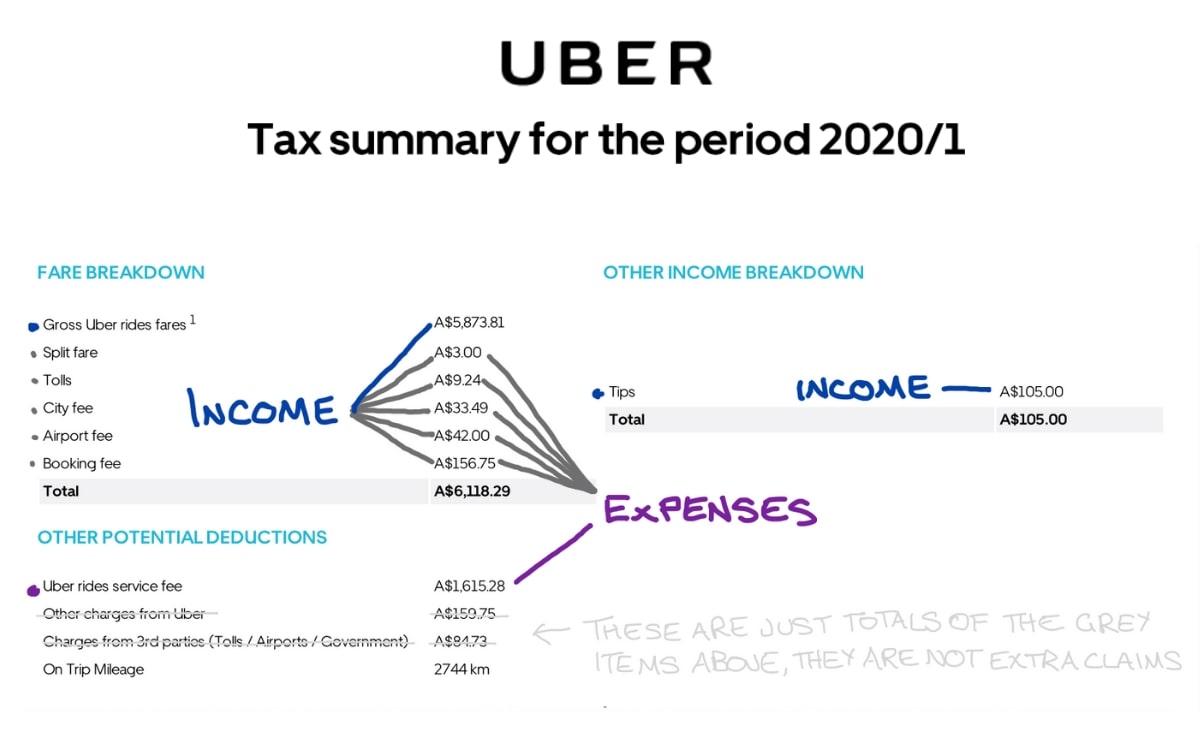
Grey Items:
Take a look first at the items marked with a grey dot above, Split Fare Fees, Tolls, City Fees, Airport Fees and Booking Fees. You receive these amounts from your rider as income, and then you pass them on to Uber as an expense. These amounts are Uber’s income, not yours, so naturally you shouldn’t pay tax on it.
However the ATO still requires you to show the two sides of the equation separately. So on your BAS statement you’ll declare these amounts as sales and pay 1/11th to the ATO as GST on Sales, but then you’ll also claim them as expenses and claim back that 1/11th as GST on Expenses. As you can see above they cancel each other out, meaning you pay $0 GST on these amounts.
So rest assured, you will only pay GST on the income that actually ends up in your pocket. The ATO just wants you to show the long-form calculations.
Here’s how the BAS calculation works in our example Uber figures above:
Income:
Gross Sales = Gross Uber Fares + Split Fare Fees + Tolls + City Fees + Airport Fees + Booking Fees + Tips
GST on Sales = Gross Sales ÷ 11
Expenses:
Total Expenses = Uber Service Fees + Split Fare Fees + Tolls + City Fees + Airport Fees + Booking Fees
GST on Sales = Total Expenses ÷ 11
(You’ll of course need to add your car and other expenses into this equation too, but for now I just want to show you how the Uber GST amounts are calculated).
GST Payable:
Net GST Payable = GST on Sales – GST on Expenses
Where Does Income Tax Come Into All This?
In addition to GST, you must also pay Income Tax on your Uber income. In other words, as a rideshare driver you must pay two different kinds of tax on your rideshare income, GST and Income Tax.
By the same token, you can claim most of your expenses under both GST and Income Tax. You’ll claim the GST portion (i.e. 1/11th) of your expenses on your BAS’s each quarter, and then the remaining portion (i.e. 10/11ths) as a tax deduction on your end of year income tax return.
> To learn more about income tax and claiming tax deductions, download our free Uber Tax Info Pack
Introduction to BAS’s for Uber and Rideshare
Now that we’ve covered the basics of GST for Uber, let’s take a look at BAS’s for Uber drivers.
What is a BAS?
A BAS (short for Business Activity Statement) is an ATO form that Australian GST-registered sole-traders and businesses must fill in and lodge to the ATO on a monthly or quarterly basis. On the form, you’ll declare your sales and expenses, calculate your net GST, and pay this to the ATO.
The BAS asks for three main pieces of information:
- Gross Sales – this is the total sales made for the quarter before deducting any expenses (as calculated above)
- GST on Sales – this is simply 1/11th of the sales
- GST on Expenses – this is the total of GST that was included in all your business expenses paid for during the quarter
We then take GST on Sales minus GST on Expenses to give the Net GST Payable. This amount is payable to the ATO by your BAS due date. BAS’s can be lodged by paper form, via MyGov, or through a Tax Agent. The due date of the BAS varies depending on your lodgment method, more on this below.
If you drove for Uber during last financial year and registered a profit, then you may also have a section on your BAS for PAYG Instalments. If this applies to you, visit our blog post on PAYG Instalments for Uber Drivers to learn more.
If you did not earn any income for a quarter, you MUST still lodge your BAS. This applies for any quarter where you were registered for GST, even if you were only registered for one day. Lodging a Nil BAS yourself is simple and free. Jump to our instructions below to learn how.
When are the Quarterly BAS Due Dates?
Here are the BAS quarter dates and lodgement due dates:
| Q1 – September Quarter | Q3 – March Quarter |
| 1st July – 30th September | 1st Jaunary – 31st March |
| • Lodge yourself – paper form – 28th October | • Lodge yourself – paper form – 28th April |
| • Lodge yourself – MyGov – 11th November | • Lodge yourself – MyGov – 11th May |
| • Lodge with Tax Agent – 25th November | • Lodge with Tax Agent – 25th May |
| Q2 – December Quarter | Q4 – June Quarter |
| 1st October – 31st December | 1st April – 30th June |
| • Everyone – 28th February | • Lodge yourself – paper form – 28th July |
| • Lodge yourself – MyGov – 12th August | |
| • Lodge with Tax Agent – 25th August |
Q1 – September Quarter
1st July – 30th September
• Lodge yourself – paper form – 28th Oct
• Lodge yourself – MyGov – 11th Nov
• Lodge with Tax Agent – 25th Nov
Q2 – December Quarter
1st October – 31st December
• Everyone – 28th Feb
Q3 – March Quarter
1st January – 31st March
• Lodge yourself – paper form – 28th Apr
• Lodge yourself – MyGov – 11th May
• Lodge with Tax Agent – 25th May
Q4 – June Quarter
1st April – 30th June
• Lodge yourself – paper form – 25th July
• Lodge yourself – MyGov – 12th Aug
• Lodge with Tax Agent – 25th Aug
If the due date falls on a weekend or public holiday then the due date becomes the next business day.
How Much GST Do I Have To Pay On My Uber Income?
All GST-registered businesses in Australia must pay GST on their gross sales/income. We discussed earlier which amounts on your monthly Uber Tax Summary are included in income, so to calculate your GST on Sales just add up these amounts and divide by 11. For other rideshare companies such as Ola and Didi the GST calculation is essentially the same. Your income equals ALL of the amounts that are collected from your passenger, and the GST is 1/11th, this is what you’ll declare on your BAS.
Again, for the amounts that you then pay forward to the rideshare company (e.g. booking fees) you’ll then claim the GST back as an expense. So you won’t actually pay any GST on these amounts, they’ll all net out to $0. The ATO just requires you to declare both sides of the equation. So rest assured that you’ll only pay GST on the amounts that actually end up in your pocket.
If you also earn other income on your ABN, such as from subcontracting, freelancing or another business, this must also be included in your Gross Sales, and you’ll pay GST of 1/11th on this income also.
(If you want to find out how much net GST you’ll pay overall on your Uber earnings, I answer this a little further down in the section titled ‘Saving for Your BAS’. Keep reading!)
What Uber Expenses Can I Claim on my BAS?
Once you’ve worked out the GST on your income, you’ll then want to reduce this as much as possible by claiming back the GST credits on your expenses.
Here’s a list of common BAS claims for rideshare drivers. Note that for some that I’ve marked with (%) you will need to apportion your GST claim for business vs private use:
- Rideshare Fees & Charges
- Rideshare Company Service Fees
- Booking Fees
- Split Fare Fees
- Airport Fees
- Government fees
- Car Expenses (%) – note that there is no cents per km method for BAS’s, the cpkm method is only for tax returns. The only option for BAS’s is to claim a percentage of your actual car expenses.
- Fuel
- Insurance
- Repairs
- Servicing and Maintenance
- Tyres
- Cleaning
- Accessories
- Hire/Rental Fees
- Other Expenses
- Accountancy
- Computer Expenses
- Courses & Training
- First Aid Kit
- Internet (%)
- Mobile Phone (%)
- Music Subscriptions (%)
- Parking (only during an active shift, not at your home or employee job)
- Rider Amenities (mints, tissues etc)
- Stationery
- Sunglasses
- Tolls
There are also some common expenses that do not have GST. These cannot be claimed in your BAS, but they are still tax deductible so they can only be claimed on your end of year income tax return.
- Bank Fees
- Car Depreciation
- Car Loan Interest
- Car Loan Repayments
- Car Registration
- Some Government Fees, Licences etc
- Water
And these expenses are considered personal expenses or otherwise are not deductible
- Clothing
- Coffee
- Fines
- Food
- Parking at home or at your employee job
- Personal Comfort
- Personal Hygiene
- Prescription Glasses that are not Sunglasses
Timing of Expense Claims on my BAS
It’s important to watch out for the timing of your of for GST claims. GST claims work on a cash basis, which means the claim happens on the date you pay the money.
A great example of this is your car insurance. If you pay your insurance in one annual premium, then you will claim the whole amount in one quarter and nothing in the other three quarters, no pro-rating or apportioning required. Alternatively, if you pay your insurance monthly then you’ll claim three monthly premiums in each quarterly BAS.
The easiest way approach to BAS claim timing is to always go by your bank statements. The transaction date and amount on your bank statement will tell you how much to claim and when.
Do I Need A Logbook to Claim Uber Car Expenses on my BAS?
You don’t need a formal 12-week logbook to claim rideshare car expenses on your BAS. Instead, for BAS purposes, the ATO only requires you to make a reasonable estimate of your percentage of use for Uber and Rideshare vs private/other use.
So how do you estimate your Rideshare Percentage in order to claim your car expenses? The ATO’s preferred method is that you keep some kind of mini-logbook. It doesn’t have to be a full 12 weeks, and it doesn’t have to follow the formatting or other usual logbook rules. It just needs to have enough data to justify to the ATO how you came to your estimated rideshare percentage. This isn’t a strict rule though, you can use any method to estimate your percentage, as long as you can show the ATO how you worked it out.
Having said all of this, although you don’t need a formal 12-week logbook for your BAS, you do still need one to claim car expenses on your end of year tax return. So my strong recommendation is that you might as well keep a proper logbook anyway. But in the meantime, if you haven’t started your logbook yet, or you’re only partway through your 12 weeks, it’s nice to know you have the backup option to estimate your percentage for your rideshare BAS instead.
> Want to learn more about how to keep rideshare logbook? Download our Free Uber Tax Info Pack
Keeping Uber Receipts and Expense Records
We all know that receipts and invoices are tricky to keep, so here are a few recordkeeping tips to make sure you never miss a tax deduction.
The ATO requires that for expenses over $82.50, you must have a tax invoice in order to claim the GST back on your BAS. For expenses under $82.50, you don’t need a tax invoice, any receipt or bank statement record will do.
A great tip is to always pay for rideshare expenses using your credit or debit card so that your expenses will appear on your bank statement. That way, for your expenses under $82.50 you can be sure you’ll always have a valid tax record, even if you lose the physical receipt.
The easiest way to keep your tax receipts is to buy an expanding file like this one. Mark each section with a category of expenses, for example fuel, other car expenses, phone bills, water & mints, stationery etc. Then grab a large envelope to keep in the glovebox of your car to collect receipts while you’re on the go, and transfer them into your expanding file on a regular basis. Finally, create a tax receipts file on your computer or in your email inbox for any electronic receipts that come via email. (Tip: put the relevant quarter into the filename of each invoice, e.g. 2024 Q2, so that you can easily identify the receipts you need at the end of each quarter.) The ATO does accept digital receipts and invoices, so you don’t need to print anything.
At the end of the quarter when it’s time to collate these expenses, you have two main options:
If you like to manage your taxes digitally, download the DriveTax Free Uber Bookkeeping Spreadsheet. We’ve custom-built the spreadsheet for all major rideshare & food delivery companies in Australia, so you can lodge your BAS for Uber, Ola, DiDi and more. It’s quick and easy to enter your expenses, whether you like to record as you go, or in one bit hit at the end of the month or quarter. The spreadsheet also includes our free DriveTax Logbook Spreadsheet, which makes it simple to keep your official ATO 12-week logbook for your end of year tax return.
Option 2 – Adding Up Manually
Alternatively, if you kept paper receipts, here’s my tip for the most efficient way to add up your expenses the old-fashioned way. Note that this option is only really suitable if you plan to lodge your rideshare BAS through a tax agent. If you want to do your own GST calculation and lodge your own Uber BAS via MyGov you will need to use a spreadsheet.
Before you start, you’ll need a calculator, sticky notes or scraps of paper, rubber bands and a space on your lounge room floor. Gather your expenses from your expanding file and your glovebox envelope, and sort them into piles for each of the categories in our list of claimable expenses above. Be sure to check the date of each receipt so you’re not mixing up expenses from last/next quarter.
Once you’ve sorted all your Uber receipts into category piles, add up each pile, write the total on your sticky note, pop it on the front of the bundle and wrap them up in an elastic band. You can then make a list of your totals for each category for the quarter, which you can then pass this on to your accountant or enter into the DriveTax Express BAS form.
Before you stash your receipt bundles away, I recommend downloading a scanner app to your phone and scanning your receipts. Scanner apps are perfect for this because instead of saving each receipt as a separate file or photo, you can save them as one PDF file, with each receipt being one page of the PDF, much easier to search through later if you need to.
The ATO requires you to keep your receipts and records for five years. They do accept digital copies, so once you’ve scanned all of your receipts and saved them safely, you’re free to throw out the paper originals if you want to.
Saving For Your Uber BAS
It’s important to save for your GST bill as you go. Otherwise you may get to BAS time and find yourself stuck with a GST bill you can’t pay.
This is one of the biggest challenges of being self-employed. As an employee, our employer takes care of this for you by withholding tax from your pay. But as a rideshare driver, you’re responsible for managing your own tax obligations and saving for the GST and income tax yourself.
The best way to stay on top of your tax savings is by setting up a separate bank account. Each time you get paid, transfer a set percentage of your earnings into the savings account before you withdraw the remaining funds for personal use.
It’s difficult to say exactly how much you should put aside because everyone’s expenses are different, which affects how much GST you’ll pay. For example, your car might have higher or lower running costs than other drivers, your phone bill may be higher or lower, you may pay to have your car washed or clean it yourself etc.
Having said this, in our experience lodging BAS’s for thousands of drivers, most driver’s GST bills end up being somewhere between 5% and 8% of their net earnings (i.e. the amount deposited into your bank account by Uber or your other rideshare companies). If you’re a person who likes to be on the safe side, you may like to save a little more than this. Or if you’re fine with just getting most of the way there and catching up the rest at the end of the quarter, then you could save a little less. It’s completely up to you.
Remember that at the same time you’re saving for your GST bill you also need to be saving for your income tax bill. Visit our blog post on Saving for Your Uber Tax Bill for more information.
How To Lodge Your Uber BAS To The ATO
Once the end of the quarter arrives, you have two choices to lodge your Uber BAS statement. You can either engage a tax agent or accountant to lodge your Uber BAS for you, or if you prefer to DIY you can lodge your BAS to the ATO yourself for free via MyGov or by paper form.
How To Lodge Your Uber BAS With A Tax Agent
At DriveTax, our Express BAS is the quickest and simplest way to lodge your rideshare BAS online. The Express BAS form gathers your Uber income and expenses, and then we process your BAS within two business days. If we have any questions or suggested extra deductions we’ll contact you by email to chat further. Then your completed BAS is immediately lodged to the ATO, and copy delivered to your inbox. All of this is great value at $99.
What sets DriveTax apart from other rideshare tax companies is that your BAS is completed directly by a CPA accountant right here in Australia. We don’t use offshore staff or AI automation. So you can be confident that a fully qualified accountant is preparing your rideshare BAS and individually checking that your expense claims are maximised.
Here’s how it works:
- Download your Monthly Tax Summaries from Uber and your other rideshare companies.
- Gather your expenses and add up a total for each category of expenses for the quarter.
- Work out your logbook percentage or estimated percentage for your car.
- You’ll also need your ABN handy if you’re lodging with DriveTax for the first time.
- Head to the Express BAS form on our website, enter your contact details, upload your Tax Summaries and enter your expenses.
- At the end of the form, enter your payment details securely and then your Express BAS is ready to submit.
- You’ll get an email confirmation right away, and your BAS will be done within two business.
When you’re ready, here’s the link to get started:
> Learn more about DriveTax Express BAS service for Uber and Rideshare drivers
How To Lodge Your Own Uber BAS on MyGov
If you prefer to lodge your Uber BAS yourself, you’ll first need to calculate the GST on your income and expenses. This can be difficult, as you need to consider business use apportionments for your car, phone and internet expenses, and also account for non-GST expenses.
The easiest way to calculate your rideshare GST is using the free DriveTax Uber & Rideshare Spreadsheet. It’s designed to exactly match the monthly tax summaries from all the major Australian rideshare companies including Uber, Ola and DiDi, and your GST on Sales is calculated for you. You’ll then enter your rideshare expenses, and the spreadsheet will do all the apportionment and GST calculations for you. It’s the quickest and easiest way to collate your expenses and get the exact totals you need to lodge your BAS either on MyGov or by paper form. The spreadsheet also includes a bonus ATO-compliant 12-week logbook which will do all the logbook calculations for you.
You can download a copy of the DriveTax Rideshare Spreadsheet instantly as part of our Free Rideshare Tax Info Pack.
> Download your FREE Uber Tax Info Pack and FREE Rideshare Spreadsheet
Once you’ve calculated your BAS figures for the quarter, you’re ready to lodge your rideshare BAS. There are multiple methods for lodging your own rideshare BAS to the ATO, but MyGov is the most popular because it’s quick, instant, and doesn’t require a trip to the post office! It’s also easier to track your past lodgements and submit a revision to a past BAS if necessary, plus it buys you an extra two weeks of time to lodge compared to using the paper form.
Regardless of which option you choose, the lodgement process is the same. You’ll enter your Total Sales at G1, GST on Sales at 1A, and GST on Expenses at 1B, and then your Net Payment amount will be GST on Sales minus GST on Expenses.
Here’s an Uber BAS example on MyGov:
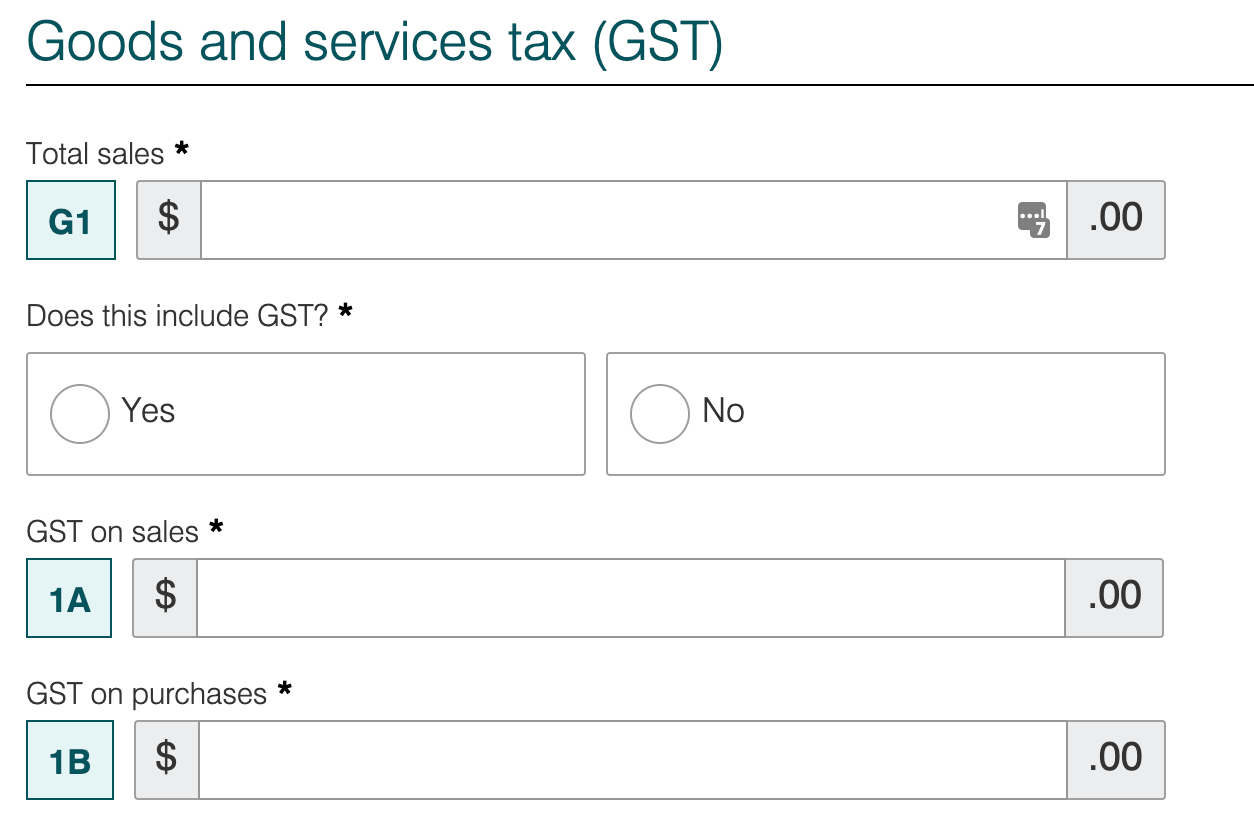
And here’s another example of an Uber BAS lodged by paper form:
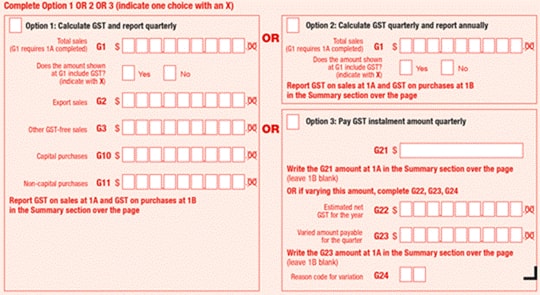
Note that if your paper form gives you options for calculating GST, always choose Option 1. Also, if your form asks you for G11, this is the total of your expenses before deducting GST and before apportioning for private use. G11 is only relevant if you purchased a car during the quarter. The DriveTax free spreadsheet will help you calculate these.
How To Lodge Your Own Uber BAS – Step-by-Step Video Tutorial
If you’d like learn step-by-step how to lodge your own BAS, our Understanding Uber Taxes online course teaches you everything you need to know. It includes 30+ video lessons on Uber and rideshare tax, a detailed video tutorial on how to use the DriveTax Spreadsheet, and also a complete video tutorial on how to lodge your rideshare BAS, plus lots more.
> Learn how to lodge your own Uber BAS step-by-step with the Understanding Uber Taxes online course
How To Lodge A Nil BAS on MyGov
If you did not earn any income for a quarter, you MUST still lodge your BAS. This applies for any quarter where you were registered for GST, even if you were only registered for one day.
Lodging a Nil BAS is quick and easy. Just log into your MyGov ATO account, navigate to the Business Activity Statement for that quarter and click lodge, tick the box to lodge as a Nil BAS, and submit.
Paying your Rideshare GST Bill
Finally, let’s take a look at the ATO’s requirements for paying your GST bill on your BAS
BAS Payment Due Dates
As I mentioned earlier, the due date for paying your rideshare GST bill is the same as the due date to lodge your BAS. So if you lodge your BAS right after the end of the quarter, you may still have a few weeks to pay your GST bill. Alternatively, if you lodge your BAS right on the due date, you will need to pay immediately.
If you lodge your BAS late, don’t panic. Although the ATO has the right to apply a late fine, in practice they usually don’t do this straight away. If it’s your first offence you will have some time up your sleeve, it usually takes two or more overdue BAS’s before fines and penalties start appearing. On the other hand, if you have a history of lodging late it is possible that penalties will be applied shortly after the due date.
(Please note there are no guarantees when it comes to ATO late fines and penalties. My comments here are only based on my past observations, your circumstances could be different or the ATO could change their policy at any time.)
Keep in mind that it’s always better to lodge your BAS on time, even if you know you won’t be able to pay by the due date. The ATO applies fines for late lodgement, not for late payment, and payment arrangements are easy to set up. By lodging your BAS anyway you are showing the ATO that you are doing your best to honour your tax and GST obligations.
How to Get a Payment Arrangement for your Uber GST Bill
If you’re not in a position to pay your Uber GST bill by the due date, that’s okay. The ATO are generally willing to set up a payment arrangement, so you can pay your rideshare GST in instalments over time. They’ll generally ask for a 10-20% deposit upfront, and then the balance can be paid in instalments over up to two years.
The easiest way to set up a payment arrangement is via your MyGov. Alternatively, you can do it using the ATO’s payment arrangement phone service which is fully automated so you don’t need to speak to a person.
If you do set up a payment arrangement for your GST bill, it’s important to note that the ATO requires you to pay and lodge all future BAS’s on time and in full, otherwise your payment arrangement will default. So although it can be tough to juggle, it’s important to keep saving for your future GST bills at the same time as you’re paying off the previous one.
In Summary
So in summary, here are your key steps to lodge your Uber BAS to the ATO:
- Get an ABN and register for GST Go >
- Track your expenses with the DriveTax Rideshare Spreadsheet Go >
- Put aside 5-8% of your Uber earnings each week to save for your GST bill
- At the end of the quarter, download your Monthly Tax Summaries from your rideshare companies
- If you want to lodge through a tax agent, head to the DriveTax Express BAS form Go >
- If you want to lodge your own rideshare BAS, check out the Understanding Uber Taxes online course for a full video tutorial Go >
Questions? Thoughts? Pop them in the comments below and I’ll get right back to you!
Safe driving! – Jess

About the Author – Jess Murray CPA – Uber Accountant
Jess Murray is a CPA Accountant and registered tax agent. She’s been working in personal and small business tax for 15 years, and has been specialising in tax for Australian Uber Drivers for the last 7 years as the Director of DriveTax. She also teaches an online course called Understanding Uber Taxes.
Jess is on a mission to make taxes straightforward and manageable for Uber drivers across Australia.
The information in this article is general in nature and does not take into account your personal circumstances. If you’d like to know how this article applies to you, please contact us to arrange a consultation, or talk to your accountant.



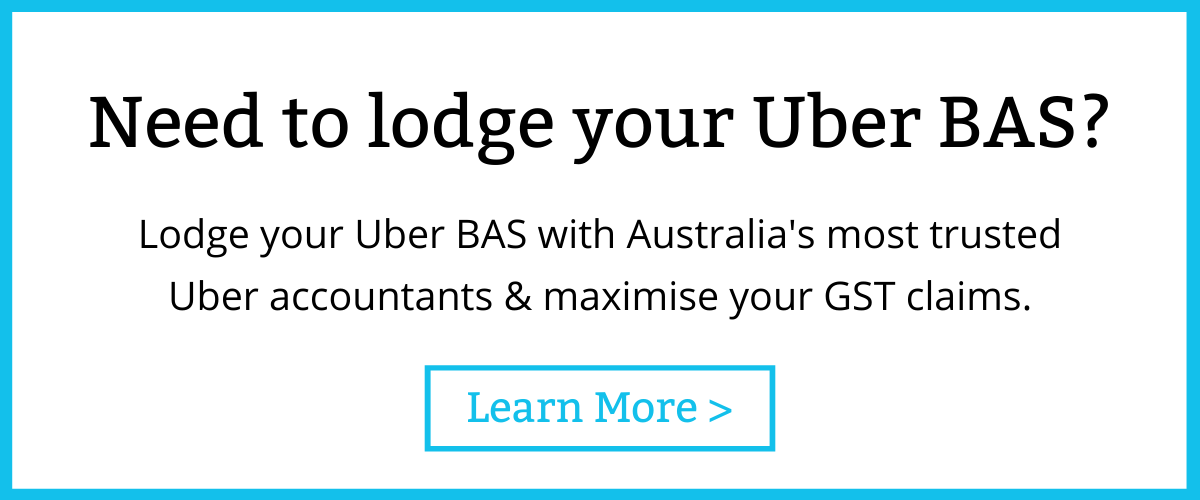
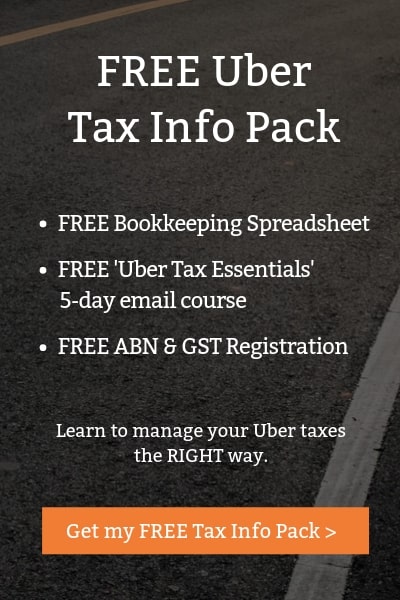
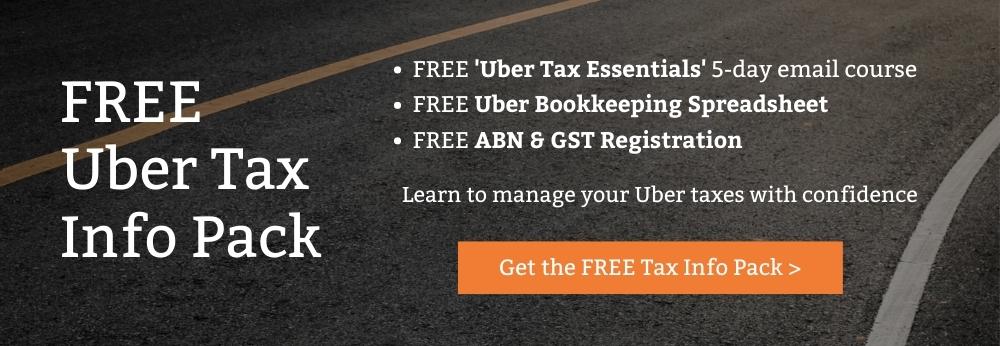
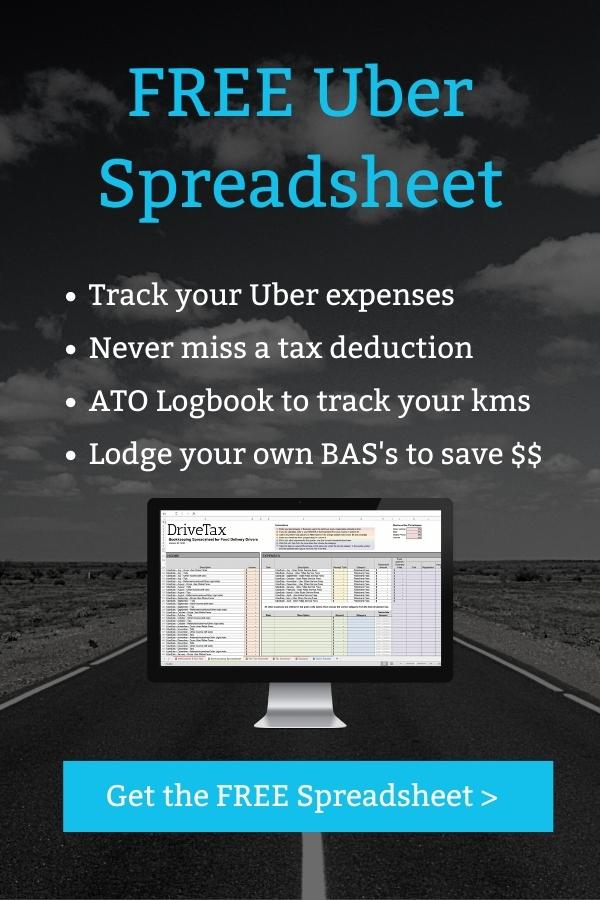
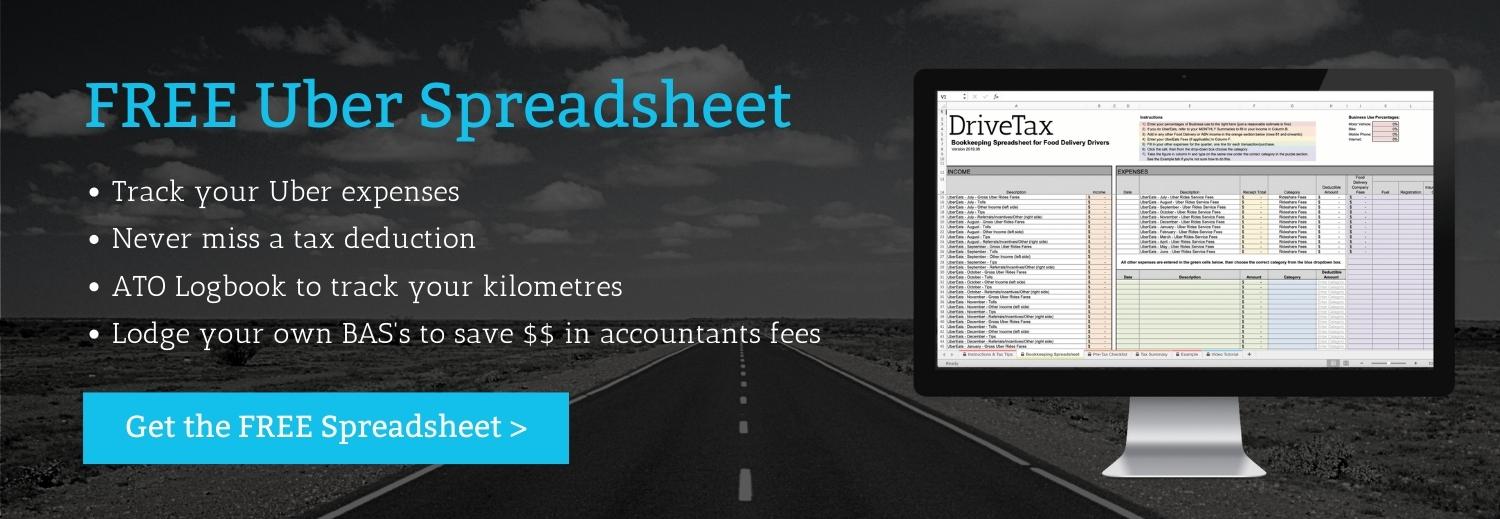
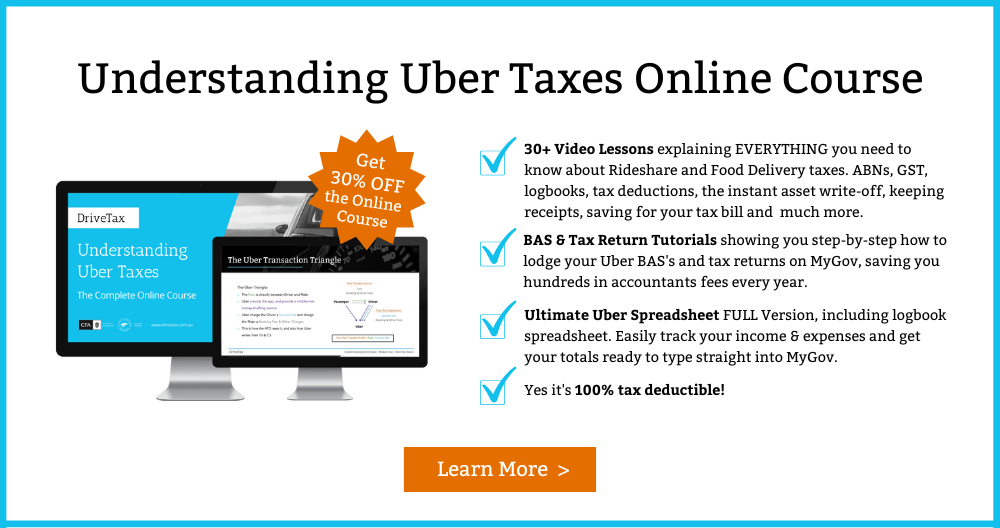
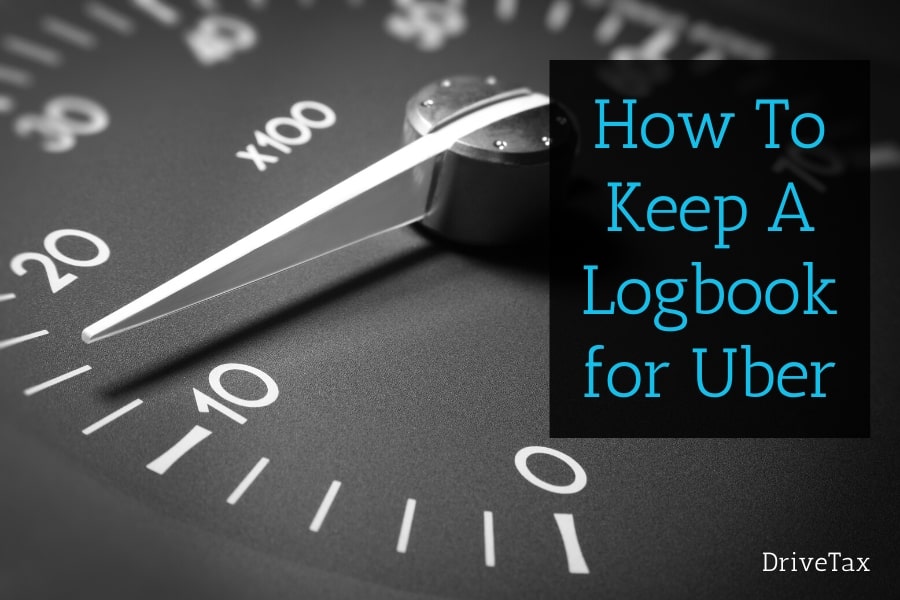
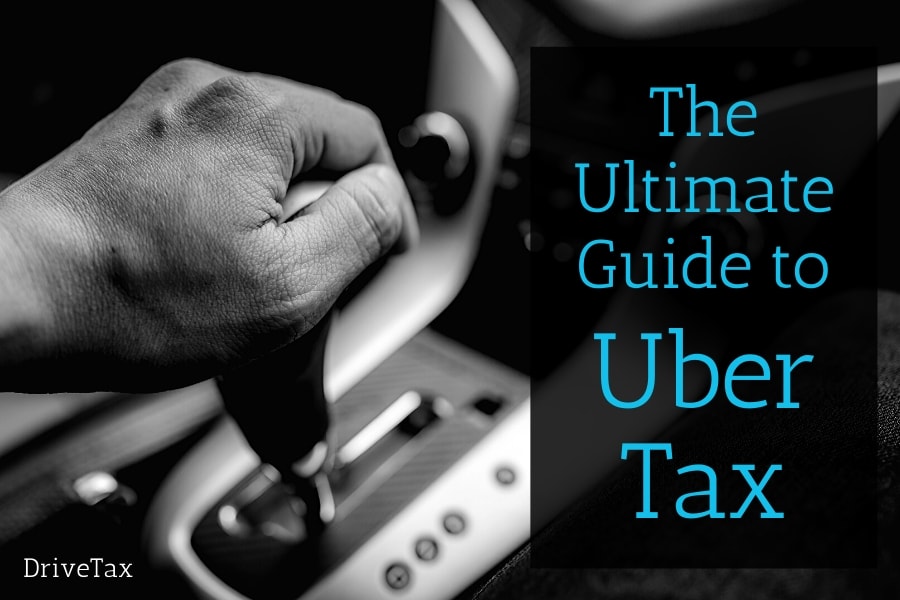
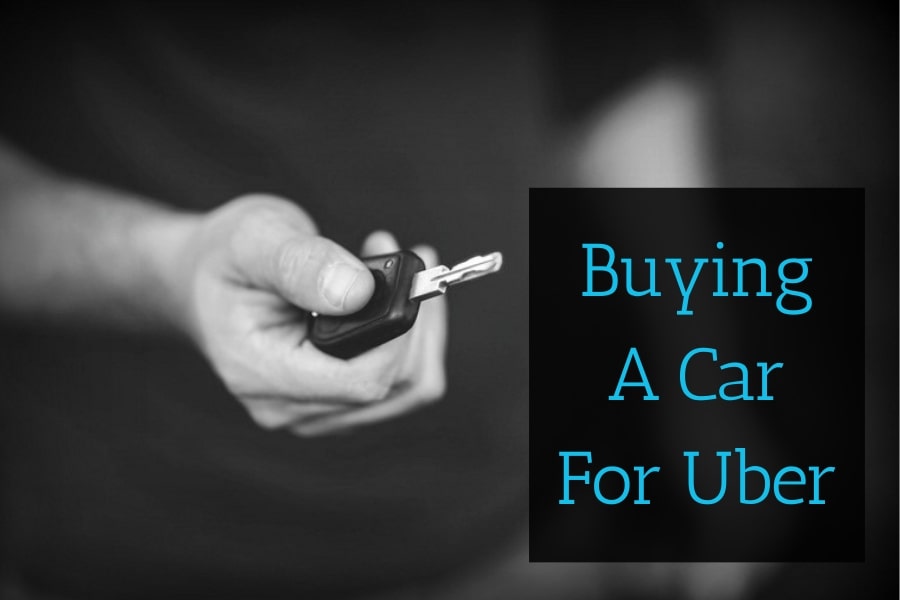
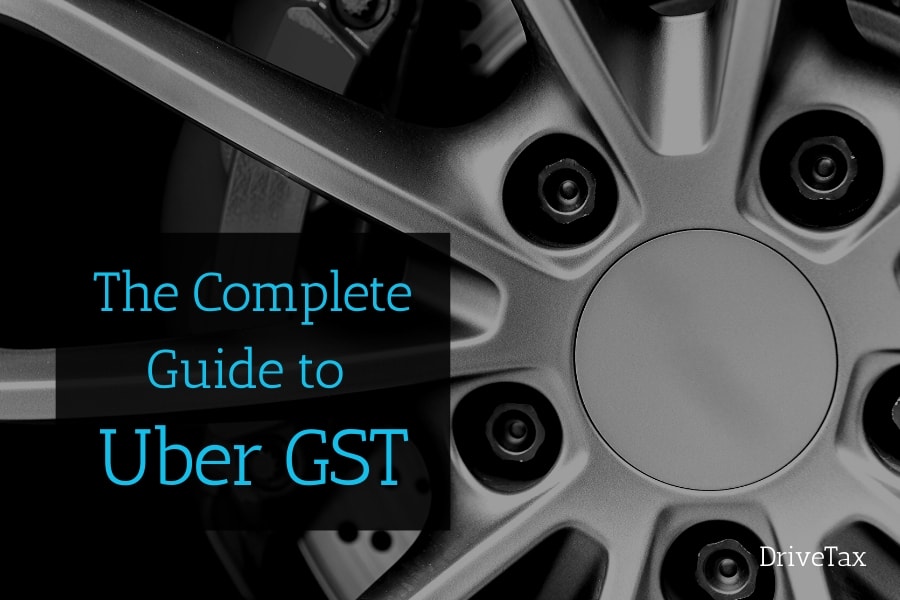
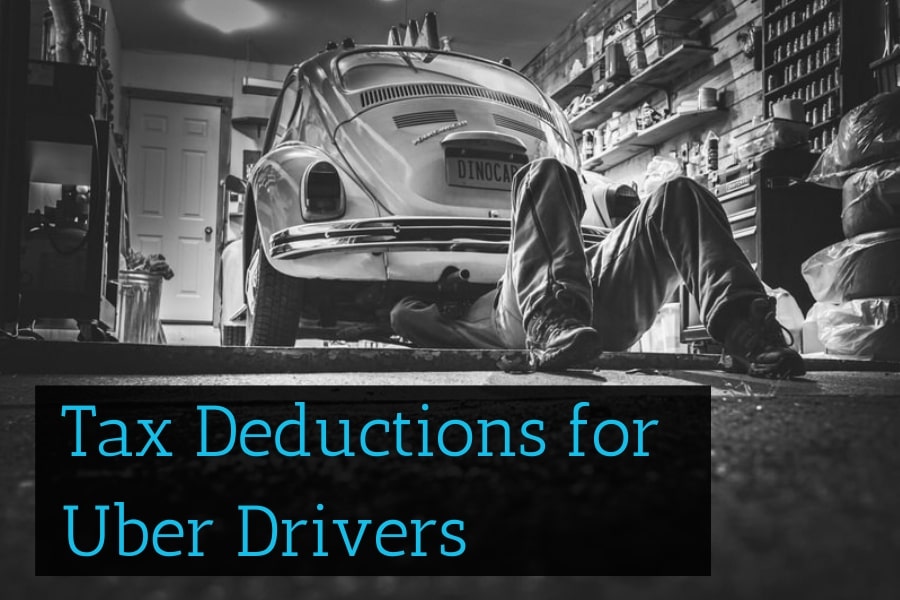
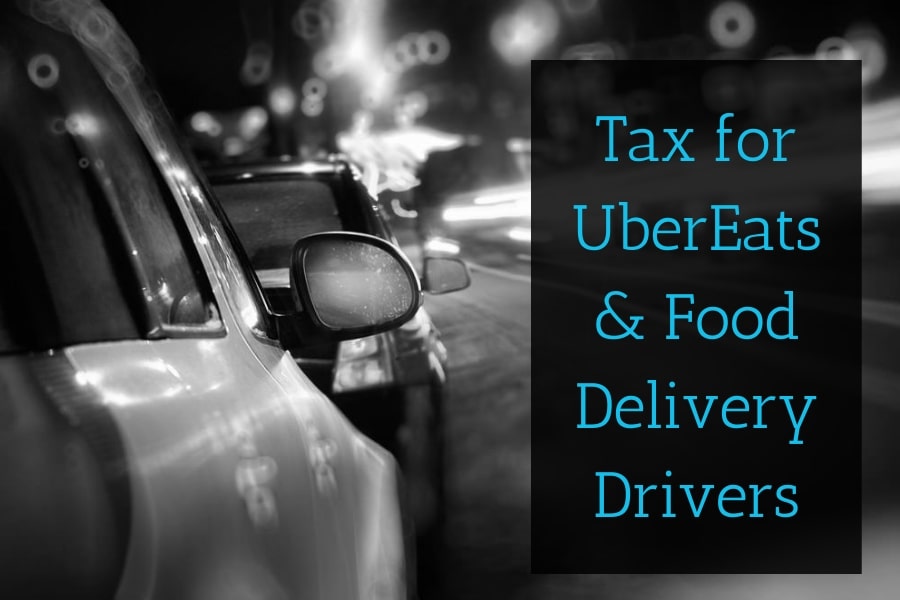
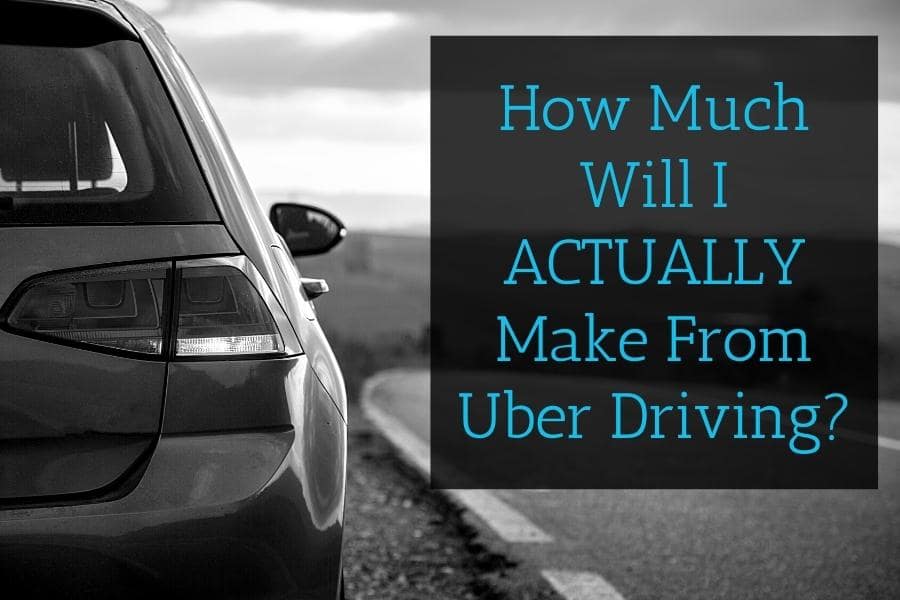
hi Jess, your article is very helpful. thanks for your help.
I recently started to drive for DiDi part time; I have a question.
Following your article,
– I found all the sales (for G1 on BAS) and deduction (to calculate 1B on BAS) info from their “Tax Summary”. Am I missing here something? I understand other expenses (fuel, vehicle related expense, mobile, internet etc.) should add with DiDi’s deduction.
– Their “Invoice” doesn’t have any use as everything is already included in “Tax Summary” under deduction. Please correct me if I am wrong.
– What is the use of their “RCTI” in BAS return? It has only one line item- “Agreement to transport passenger at a discounted fare”. Should this be considered as income/deduction?
Hi Habib, for DiDi, the most important tip is to ignore all the other statements and invoices they send, and only use the Tax Summary. This will line up perfectly to the DriveTax Spreadsheet which will do all the tax and GST calculations for you. – Jess
Thanks a lot for your reply Jess. highly appreciated.
Hi Jess.
I have bought the Tax Sheet and filled it.
But when I fill in the Gross transportation fare* from my Ubertax invoice The total including taxable Government payment from your TaxSheet is different from my Total Payments from Uber Tax Summary.
Are they should be different?
Kind regards,
Roman
Hi Roman, I suspect that’s just GST. If you take the total of all amounts in your orange section, and divide by 1.1, that should equal the income in the Tax Summary tab of the spreadsheet. If that’s not the case, please email me your spreadsheet and I’ll take a closer look for you. – Jess
Hi Jess,
I have paid for the Ultimate Uber Spreadsheet course, which is very useful.
I have a question regarding my quarterly BAS. I recently started using the Uber driver app but don’t have a logbook.
Is it possible to use the Cents per kilometre method for the BAS for the GST on expenses?
Thanks a lot.
Hi Rene, I’m glad you’ve been finding the spreadsheet helpful. There are two sets of rules for car kms, one for BAS’s and one for Tax Returns. For BAS’s you cannot use the cents per km method. However a logbook is not compulsory, you can just estimate your business use %. The rules are different for your end of year tax return, for tax returns you must either have a valid 12-week logbook, or use must use the cents per km method. You can find more detail in our article on Keeping A Logbook For Uber. – Jess
Hi Jess ! Great info. I have a question with regards to my quarterly BAS. I stopped doing Uber X and did a bit of Uber eats, stopped that as well. I however paid for vehicle registration and other sundry expenses amounting to a little GST payments. I haven’t had any GST income but only expenses. Can I lodge negative gst BAS?
Hi Soiz, if you are not earning taxable income from your business activity (e.g. rideshare or delivery driving) then you cannot claim deductions for expenses. So you can only claim deductions if you were actively driving at the time you paid the expenses. If you had already stopped driving, then you can no longer claim. – Jess
Hi Jess,
First of all, this article (Uber BAS Explained—The Ultimate Guide to BAS’s for Uber Drivers) has helped me a lot. It is a very detailed and easy-to-understand tutorial. However, I was wondering if this information would also be available in printable form if I purchase the “Uber taxes online course,” or will you provide all the info/course contents as a printable handbook?
Kind Regards
Tanjidul
Hi Tanjidul, I’m glad our content has been helpful. I’m sorry, all our content is online. You can certainly print anything you find online just using your internet browswer, but our resources are not designed with printing in mind as it’s not a common request these days! – Jess
Hi Jess, I have a question about the BAS and GST, I started the uber rideshare in May 2022 where I thought not required to register for GST. In May 2023, I consulted the accountant who informed that it needs to be registered for uber and $75000 threshold doesn’t apply to uber drivers. Hence, he has registered that from May 2023, and paid for whole FY 2022-2023. So, my question is is that possible to back date registration and lodge BAS quarterly from May 2022 or it is fine as paid for whole financial year.
Hi Vis, you must be registered for GST from the very first date you drive for Uber, so you will need to ask the accountant to change the GST registration back to May 2022. Also note that rideshare drivers must register quarterly, annual registration is not permitted. – Jess
Is that possible to back date? How will that work? Will ATO raise any concern on that? Can I do this now and revise BAS to quarterly from May 2022 even if it was paid?
Hi Vis, yes, you must adjust all the existing lodgments so that you are paying GST on all your income from the date you started for Uber. You mentioned that you used an accountant so it is their mistake, so you should go back to them and ask them to fix it for you. – Jess
Thanks Jess, Should I ask him to revise the paid one to lodge BAS quarterly from May 2022? Is that possible to revise/split paid annual BAS into 4 quarters?
Hi Vis, I’m sorry I can’t give personalised tax advice here. You will need to ask your accountant to talk to the ATO and see what they can do. – Jess
Thanks a lot for sharing this information, it’s been a great help 🙏
Thanks for the kind words! – Jess
Hi Jess
Thank you for sharing all these information. Got a question regarding BAS. Started off as a part-time food delivery driver for couple of months, but early 2024 decided to do ridesharing and had applied for gst. My question is do I have to do BAS and pay gst during the period of food delivery months? Or it will only start after I registered the business for gst? A bit confused. Thank you in advance
Hi Mei, no, you only have to do BAS’s starting from the quarter of your GST Registration date, and you must only include income and expenses from that day forwards. You cannot include expenses before to your GST registration date, and you don’t have to pay GST before that date either. – Jess
Hi Jess,
Thank you for sharing all this very useful information.
You are able to explain tax matters so clearly, that I have decided to go ahead and purchased the full video course!
I have a couple of questions regarding having an ABN used for two separate types of activities, Uber Driving and freelancing (let’s say as designer).
I have my sole trader ABN registered with GST that I would like to use for Uber driving, and I am using my personal name for this.
If I also want to do freelancing, do I need to register/create a separate business name (ie trading as Designer) under the same ABN, and separate the two types of activities? Or can I use my personal name for both?
When I lodge the BAS, do I have to lodge two separate BAS, one with all GST expenses/income for Uber Driving, and then a separate BAS for the freelancing activity?
Thank you!
Riccardo
Hi Riccardo, great question. Business names are not relevant to the ATO, they are just for marketing purposes, so it’s completely up to you whether you use a business name or just your personal name. From the ATO’s perspective, all that’s relevant is your ABN. You can only have one ABN, and it will cover all of your business activities. Furthermore, if your ABN is registered for GST, then your GST registration applies to all your business activities too. What this means for you is that all your income and expenses for both businesses must be declared in your one quarterly BAS, and in the one business schedule in your end of year tax return. You cannot lodge two BAS’s or two tax returns, you can only lodge one of each, and your two business activities must be declared as a combined total. You must still keep separate records of the two business activities, because in some limited circumstances you will need to determine the two seperate taxable profits/losses of the two businesses separately. But in most cases you’ll add the two businesses together for your lodgments. – Jess
Thank you for the quick response Jess!
Hi Jess,
I have registered abn with gst at the end of last financial year, and spend some money on registration for DA, CPVV and etc. But I haven’t start any ridesharing until July. So can I still claim the gst in the BAS without any income from last quarter? Thank you.
Hi Linbo, the ATO understands that sometimes, just because of awkward timing, you can have startup expenses for a quarter without actually incurring income until the next quarter. So it’s no problem to claim these expenses even when there’s no income to go with it. – Jess
If I omit to include an expense invoice in my quarterly BAS can I include it in the next quarterly BAS?
Hi John, if the expenses are minor, and if it’s still within the same financial year, then yes you can just add it into your next BAS. So for example, if you omitted an expense in your Q2 December BAS you could add it into your Q3 March BAS. However you can’t mix financial years, so if you omitted an expense from your Q4 June BAS, you would have to Revise the BAS, you can’t add the expense into your Q1 September BAS because it’s a different financial year. – Jess
hi will you please show an example of BAS for uber
Hi Apoo, if you’d like a tutorial on how to complete an Uber BAS I suggest checking out our Understanding Uber Taxes online course, which includes a full step-by-step tutorial. Or for a lower cost there’s our Ultimate Uber Spreadsheet which gives you the figures you need to complete the BAS yourself. Otherwise I hope the information in our article above plus the links to the ATO website will point you in the right direction. – Jess
Hi Jess,
I was wondering how I go about claiming phone expenses.
Hi Geoff, to claim your phone expenses you’ll need to estimate the percentage that your phone is used for business vs personal use. You don’t need to be too scientific about this. If you think about the number of hours per week you spend actively using your phone (calls, messaging, emails, internet browsing, social media, Uber etc), what percentage of that time would be for Uber? This will tell you what percentage of your phone bills to claim. – Jess
Hi Jess,
I have received Uber special promotion A$ 750 in November 2022. Is this GST inclusive or not ? And also
refunds (like tolls) Do i Have to pay GST.
Hi Wilson, All payments you receive from Uber are subject to GST, including tips, bonuses and promotions. This is because they are connected to you providing a service (that’s the S in GST), for example completing a certain number of trips. Refunds of tolls and airport fees are subject to GST, but the tolls and airport fees themselves are a GST claim for you. So the two cancel each other out and the net GST impact to you is $0. – Jess
Hi,
If the vehicle is registered under my name but my husband drives it part time for Uber and Didi, does this mean that the registration can still be Private use? Furthermore, will he still be able to claim rego fees as his expenses? Thank you
Hi Karen, I can’t speak for the registration requirements, you would need to ask your state’s road authority. He can certainly claim tax deductions for the car even if it is in your name as long as he has a valid 12-week logbook. – Jess
Hi Jess,
I deducted annual car insurance’s whole amount in one quarter and nothing in the other three quarters as you’ve said above. Thank you for information! After driving six months, I’ve stopped ridesharing, canceled my annual rideshare insurance policy and got refund for the rest of days remaining. Do I have to pay gst of the refund I got now? Since I’ve deducted whole amonut of gst earlier..
Thanks,
Matthew.
Hi Matthew, yes you’re exactly right, if you have been reimbursed some of that expenses then you must make a GST adjustment. You can do this either by treating the insurance refund as income in the quarter you received it, or by going back and amending the original BAS. – Jess
HI Jess,
I am a full time Uber driver, and lodge my BAS based on the earnings I receive from driving. During FY 20 21 I received the Vic Gov business costs grant and also some vic gov isolation payments. From what I understand these payments do not have GST. Does this mean I do not need to report them in G1(total sales) in my BAS?
Hi Mark, that’s correct. JobKeeper and all government COVID grants do not have GST and therefore should not be declared in your BAS. Most government payments are taxable in your end of year tax return, but certain Victorian grants on an ATO list are tax-exempt. – Jess
Thanks Jess
HI Jess,
I am a full time Uber driver, and lodge my BAS based on the earnings I receive from driving. If I earn inerest from bank accounts,,term deposits or other investments does this income also need to be reported in G1 (total sales) in my BAS statement?
Hi Mark, no, interest and investment income must not be included in your BAS’s. Only income earned under your ABN. – Jess
Hi Jess,
For the BAS report, why ‘annually’ is not an option for Uber drivers?
Hi Tania, the ATO a rule that taxi drivers and rideshare drivers cannot register for GST annually, it must be monthly (which we don’t recommend as it’s three times as much work) or quarterly. – Jess
Excellent material . Kind if One Stop Shop for Uber Tax things.
Great Effort Jess.
You are actually helping the rideshare community.
thanks
Thankyou so much Usama for the kind words! – Jess
How much percentage we claim for car inurance
Hi Raja, you must work out what percentage you use your car for Uber vs private use. That is the percentage you can claim. For BAS it’s okay for this to be a reasonable estimate, but for your end of year tax you must have a 12 week logbook in order to claim. – Jess
Hi Jess, is the new car payment considered as a GST expenses if I purchased the car during the quarter?
Hi Tayib, yes, but don’t forget to apply your Uber-use percentage. You can read more in our blog post on Buying a Car for Uber. – Jess
Hi Jess. When we pay gst and bas every quarter. Will that show up in my end of year tax return ? Do i have to delcalre and pay tax on anything else at the end of the tax year or is every quarter all I need to do ? So confusing
Hi Aaron, GST and income tax are two entirely separate kinds of tax, and if you are GST-registered then you have to pay BOTH kind of tax on all of your business income. GST is declared quarterly on your BAS, while income tax is paid annually on your end of year tax return. I recommend our posts on GST and Income Tax for more information. – Jess
I am registered for GST but I have only been doing Uber Eats deliveries meaning there is no GST. Am I required to lodge a BAS with my income and on the 2nd question, ‘Does this include GST’ choose ‘No’?
Hi Henry, if you are GST registered then you must pay GST on ALL of your ABN income including UberEats, so all that income must be included in your BAS. If you don’t plan on doing any rideshare driving going forwards you may like to consider de-registering from GST so that you don’t have to pay GST on your UberEats income. – Jess
Are bonuses received from Uber recorded in our quarterly bas or only at the end of the year when doing my income tax return.
Hi Vince, normally yes, bonuses and rewards from Uber are subject to GST because they are connected to activities (i.e. driving) in Australia. The exception is where Uber pay a one-off special bonus to every driver in Australia – sometimes, depending on the reason for the bonus, this may be GST-free. But this has only ever happened once in Uber’s history in Australia so it’s quite rare. Most of the time they will be subject to GST and therefre must be included in your BAS. – Jess
Hi
I am using my tax summaries as you described to calculate sales and expenses amounts for BAS. As at June 30 though the amounts on the tax summaries don’t balance with the amounts deposited into the bank account. Do you have any ideas why this might be? Also, the partner invoices Uber provide don’t match the tax summaries….. need help!
Many thanks!
Hi Sue, this is generally just a timing issue. Your Uber payments are weekly, but the monthly statements aren’t exactly four weeks, more like four and a half. I can assure you it does work out over time! – Jess
Great info Jess, i think this will help lot of uber driver and save them some more extra $$$
I have 2 cars and i drive both of them with ride share, can I claim expenses for both the cars
Hi Khoj, thanks for the kind words! Yes you can claim both, but you will need to calculate a separate percentage estimate (BAS’s) and logbook (tax returns) for each vehicle and track their expenses separately. – Jess
I have a question though. Mygov online lodgement screeshot you’ve attached. (right above the paper lodgement form) What is the answer for the question ‘does this include gst?’ Is it Yes or No? It is a bit confusing.
If GST is included in total sales, it has already been included in the fares paid by the rider. is the answer in that context Yes? or simply because Uber income is not categorised as GST-free supplies? Thanks
Hi Stevie, you should always tick yes to that question. GST is included in your business income because YOU are a GST registered business, it has nothing to do with Uber. – Jess
Imao, It is the best info pack on how-to-BAS by far. I have saved it in my bookmark. You have done such a wonderful job by pulling it all together using your knowledge, know-how and experiences as a tax professional. I will choose drivetax and especially you if I need a tax agent.
Hi,
This is very helpful. Thank you for putting it together.
I have a question regarding tolls. I understand that for BAS, tolls are income and expenses, so they offset each other. However, what happens when it comes to doing my tax return? Do i have to keep a record of what tolls relate to Uber/Didi, or are the amounts showing on the statements enough to claim as deductions?. Also as they would offset each other in the BAS, would I be claiming the toll amounts including GST?
Hi Karen, that’s exactly right, it’s the same for both BAS’s and tax returns, the toll income from passengers and the toll expenses that you pay should completely offset each other. You can just use figures from your Uber summaries, and you will always have your toll statements available if the ATO ever wanted to check (which is almost unheard of). In your tax return, you would exclude GST on both the income and the tax deduction. – Jess
This article has helped me plenty. Very detailed and easy to understand tutorial. Thanks Jess.
Thanks for the great feedback Steve! – Jess
good info thanks
Appreciate the feedback Ramana!